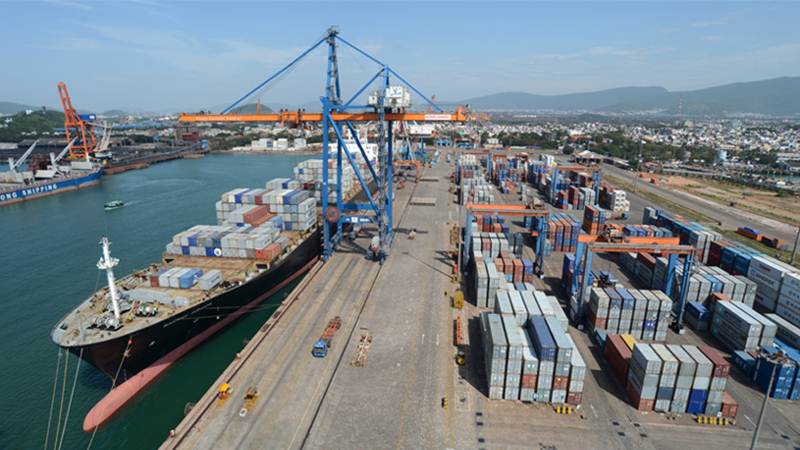India - US on a new trade package
September 20, 2018 | Expert Insights

Washington and New Delhi are looking to remove long-standing irritants to ties, which include tariffs and other non-tariff barriers.
Indian farmers and U.S. manufacturers of medical devices could be among the main beneficiaries under the new trade package.
Background
The United States has a history of imposing tariffs dating back to the 1700s. In 2002, duties imposed by President Bush were thought to have cost the country 200,000 manufacturing jobs. They were lifted a mere 21 months after their imposition.
In March 2018, US President Donald Trump announced his intention to impose tariffs of 25% on imported steel and 10% on imported aluminium “for a long period of time”. The President cited “national security” in order to circumvent WTO commitments. Trump’s administration has cited Section 232 of the Trade Expansion Act of 1962.
The US has traditionally enjoyed relatively warm ties with India. Indian Prime Minister Narendra Modi visited America in 2017 after Trump assumed power. In February 2018, Trump praised PM Modi, but added that the US was “getting nothing” from the trading partnership between the two nations.
Analysis
Having clashed for months over tit-for-tat tariffs on steel and some agricultural products, New Delhi and Washington began talks in June that also cover India’s concerns over U.S. steel tariffs and U.S. problems with Indian tariffs on imported IT equipment.
“We are closely negotiating a discrete package of trade issues. It will amount to a pretty substantive agreement,” said a source with knowledge of the negotiations.
Neither the office of the United States Trade Representative or India’s trade ministry have clarified any further than an official announcement of the negotiations. The two sides expected to close the deal in the next few weeks.
U.S. President Donald Trump, who dislikes multilateral trade agreements, said earlier this month that India had approached the United States to "start doing a trade deal," without giving any details.
The current discussions, however, are focussed on removing outstanding sources of friction, and are not aimed at creating a bilateral free trade agreement.
Having already waded into bigger fights with China and the European Union, Trump has previously called out India for unfair trade practices. At an estimated $126 billion, U.S. goods and services trade with India last year was less than a fifth of its trade with China.
Unlike some other countries India failed to be given a waiver after the Trump administration imposed new import tariffs on steel and aluminium imports in March.
New Delhi retaliated by raising tariffs on a number of U.S. products but has held back from implementing them while it negotiates a package to soothe ties. The tariffs were to go into effect from Monday midnight but the government issued an order saying these had been deferred until Nov. 2.
U.S. companies are watching an Indian economy that is growing at more than 8 percent, as they seek presence in a market that has potential for massive growth.
One of the most prominent trade issues to erupt during Trump’s presidency has involved India’s treatment of medical devices imported from the United States. Last year, U.S. exports of medical devices and equipment to India totalled $863 million.
India last year equated high profit margins of medical device makers with “illegal profiteering”, capping prices for some heart stents - small wire-mesh structures used to treat blocked arteries - and knee implants, to help poor patients.
That measure provoked a storm of criticism from U.S. companies, such as Abbott Laboratories, Johnson & Johnson (J&J) and Boston Scientific, which said such controls hurt innovation and future investment plans.
In June, India’s federal think tank Niti Aayog invited industry views on a new policy which would cap trade margins, and not prices, to help patients while allowing the industry “reasonable profits”.
Counterpoint
The US is attempting to balance its trade deficit with India, which currently stands at $23bn. India consumes far less agricultural, manufactured and IT services exports from the US as compared to China or Russia. A trade deal with significantly reduced tariffs and non-tariff trade barriers will allow the US to counteract the symptoms of its ongoing trade war with China.
India represents an untapped potential for American companies, with a rapidly rising middle class and increasing consumption patterns. The existing trade environment prevents key American exports from reaching India shores. An example of this is the famous “Mangoes for Motorcycles” agreement under which India could export mangoes to the US while Harley Davidson could export motorcycles to India.
Assessment
Our assessment is that the new agreement will likely open up the trade between India and the US. The Indo-US trade has always been cited as unrealised potential. We believe that this new trade package will fulfil the trade potential US and India have. We feel that the US will press for reduced tariffs in the areas of IT equipment, including circuit boards, screens and memory chips.








Comments